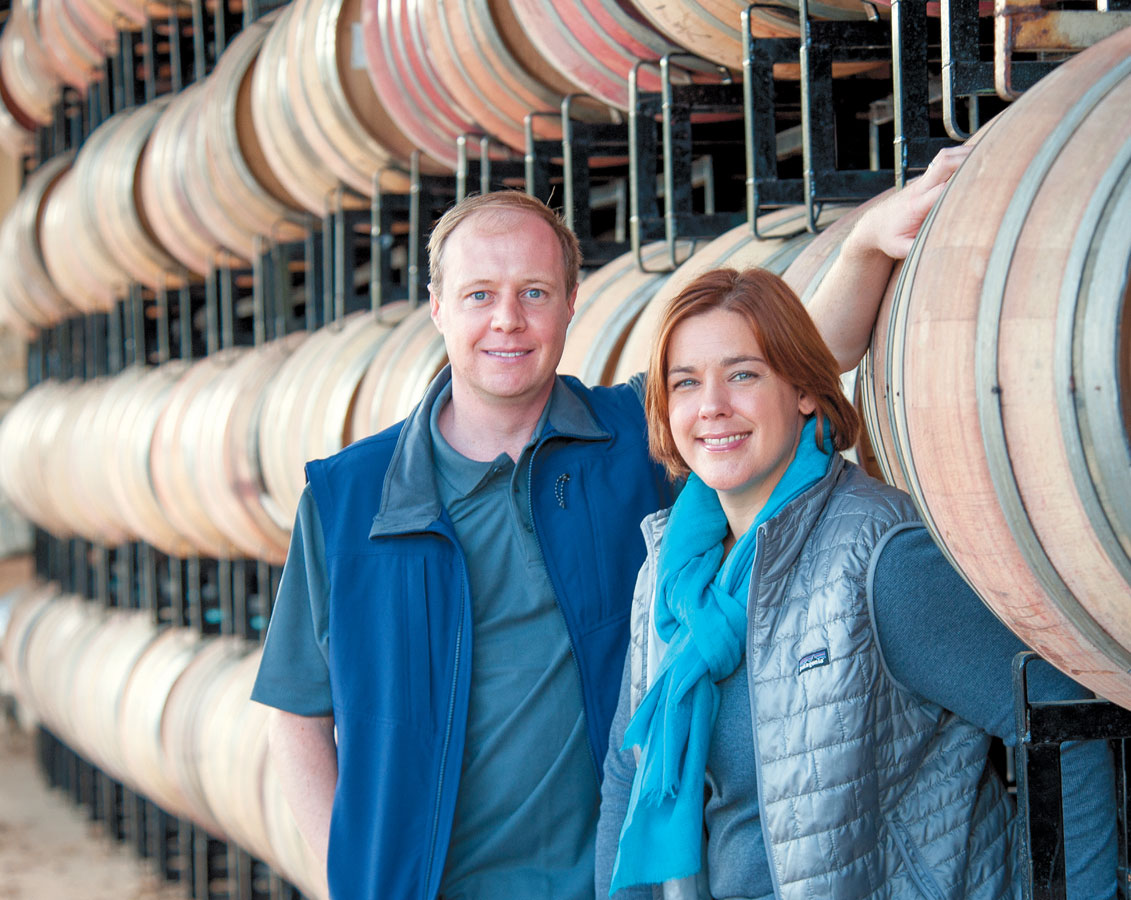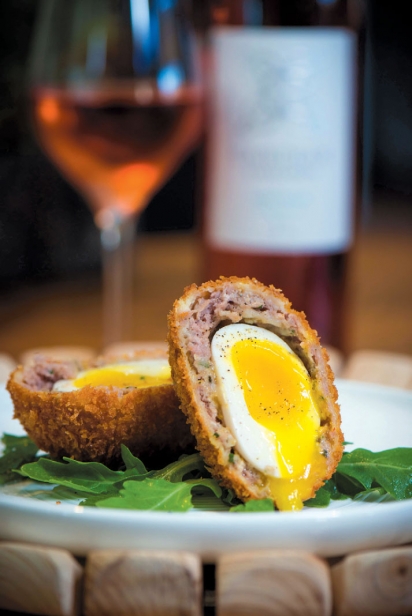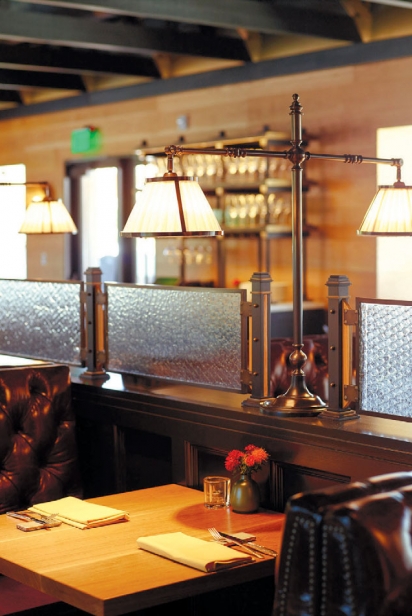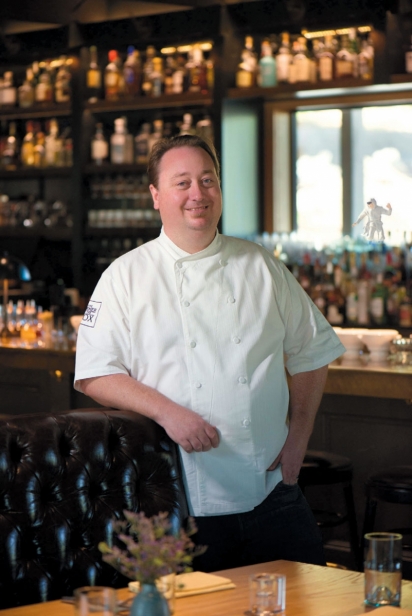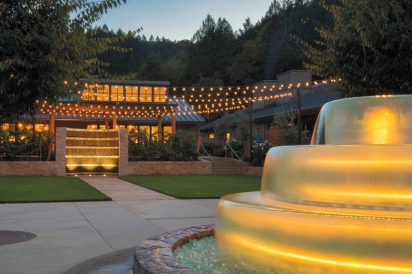Scottish Traditions and Family Honored at Cairdean Estate
Naming wines after family members can seem so cliché as to be almost meaningless. For Stacia and Edwin “Ed” Williams, the owners of Cairdean Estate Vineyards and Winery in St. Helena, family and a commitment to their joint heritage is at the heart of their expansive new business venture.
Haley Margaret, Stacia’s cousin who passed away in 2012 from complications of cystic fibrosis, has a wine named for her, an unoaked Roussane, Pinot Gris and Viognier blend that won gold at the 2015 San Francisco Chronicle Wine Competition. The bottle design, a spray of 65 roses, is interlaced with icons of Haley Margaret’s favorite activities—knitting needles, a hockey stick—and $10 from the sale of each bottle goes to support the Cystic Fibrosis Foundation.
“Kids say ‘sixty-five roses’ instead of ‘cystic fibrosis,’” said Stacia. “That is how we got the name for the wine.” Meaningless? No. Inspiring? Yes.
It is these small, intimate touches that inform the business trajectory of Cairdean and bring a touch of Scottish hospitality to northern Napa. “My maternal grandfather was Scottish,” said Stacia, who honors this heritage in everything at Cairdean from the name (“Cairdean” is the Scottish Gaelic word for “friends”) to the modern Celtic “knot” brand/symbol designed for the property.
The Williamses, Stacia a software engineer and Ed an aerospace engineer, met in 2000 through mutual friends when they were both living on the East Coast—she in Boston and he in Hartford. Even then, Stacia was a garagiste, making wine for the sheer enjoyment of the process. Ed, whose family has called Fresno home for three generations, comes from a family with a background in wine grapes: his great-grandfather was a viticulturist. After they married, the Williamses returned to Fresno where Stacia pursued a degree in enology and viticulture at Fresno State.
“I wanted to know how to market and sell wine, as well as the craft,” Stacia said.
The pair wished to move to a location known for premium wines and chose St. Helena for its small-town feel. With the help of family, in 2010 the Williamses purchased the land parcels that once housed the St. Helena Marketplace and, before that, a vintner’s village.
“We were not thinking this big,” said Stacia, but the size of the project “allows us to synchronize the various businesses and the customer experience.”
After years of work, the string of original buildings that flank a central courtyard are each developing a unique identity under the Cairdean brand. As you enter the main compound from the broad parking lot, the first low-slung, putty-colored building is the Estate Tasting Room. Stand at the wide bar to enjoy a flight of tastes across the spectrum of Cairdean’s wines—Stacia, with Ed’s input, makes a range of wines, from the regionally expected Cabernet Sauvignon and Sauvignon Blanc to the playful Fumé Blanc and Petit Syrah—then relax on one of the cozy couches or chairs while you contemplate a journey through Cairdean. Twinned to the tasting room by a covered walkway is the clubbier Winemaker’s Den. Furnished with a fireplace and deep leather club chairs, this room is available by reservation only.
Across the green grass of the courtyard, past the Curaçao blue shimmer of a pearlescent waterfall, stands a third building. Here is Rosgal, an on-site gallery space that will feature works by local artists, some that craft wine-focused art. (Think mosaics with wine bottle foils.) Next door is Redolent Mercantile, where curated items such as Aëdele headphones, Leather Head footballs and fine Scottish blankets will soon be for sale. (At the time of this writing, finishing touches are still being put into place at Rosgal and Redolent Mercantile.) A private dining room, replete with giant glass orbs to facilitate the sensory understanding of wines essences, will host special events as well as classes on art and wine.
Peek behind Redolent Mercantile to see the soon-to-be-open picnic area. Shaded by ancient oaks and olive trees and backed by a verdant meadow, it is a reminder of Napa in its earlier days, when a bottle of wine and a picnic basket were all anyone needed for refreshment. Luckily, provisions for a picnic basket are to be had at Butterscots Bakery, the bakery-deli-picnic supply shop at Cairdean. The entire menu is designed for al fresco dining; everything is easy to pack into your own bag or one of the cute baskets from the market. If picnicking is not your cup of tea, shaded seats under the vine-covered awnings of the broad patio are perfectly suited for savoring a cheddar and scallion scone, sandwiches such as the pork “knuckle sandwich” with caramelized onions and cheddar, or a wide range of salads including the unique and delicious butternut squash, pickled shrimp, pistachio and lime.
Brunch served on the patio features dishes pulled from the patio’s centerpiece, an outdoor wood-burning oven. Almond and oak wood, as well as vine trimmings and the occasional barrel stave (a dozen or so barrels were damaged in last August’s Napa quake), gently infuse dishes like Welsh rarebit and Dutch baby pancakes cooked and served in clay cazuelas.
Chef Joseph Humphrey runs the show here and at the more formal, evenings only, The Farmer & the Fox restaurant. Almost immediately after opening, Humphrey’s work at the new gastropub earned the Michelin Guide’s Bib Gourmand award for offering “high-quality food and service at a good value.”
Humphrey, who made his name at Auberge du Soleil and earned his first Michelin star at The Restaurant at Meadowood, both fellow St. Helena properties, returns after more than 10 years working on well-received projects in Marin (Murray Circle at Cavallo Point), San Francisco and elsewhere. In the intervening years, Napa dining has changed to include far more fine dining options than when Humphrey began his career in the valley.
“When we first talked about The Farmer & the Fox, we wanted it to be more mid-range and casual,” Humphrey said. “But that is not what people expected.” Dark wood tables, made cozy with diffuse light from shaded lamps, are framed by tufted maroon leather banquettes. High-polish black and white checked marble flooring and a softly gleaming brass bar might be casual elsewhere but here, the look is elegant.
Locals still stop in for a well-crafted burger and a beer, but return with friends and family for the California cuisine with Southern touches that have come to define Humphrey’s style. Scottish flavors inform the menu but are more of a starting point. Some dishes have been reimagined as the restaurant has evolved. At first, the rabbit Wellington was a humble affair, stuffed with Swiss chard and mushrooms. As Humphrey has come to understand his customers, the flavors have evolved to “push the culinary boundaries a bit more.” Fashioned now after “hare Royale,” Humphrey’s current Wellington takes advantage of the newly re-legalized foie gras (it is the stuffing) and the red wine reduction sauce was updated to include pork blood. Dishes like butter poached shrimp with oatmeal cracker and sour orange chutney and griddled sourdough crumpet with English pea tapenade and uni revel in the flavors of the British diaspora and showcase Humphrey’s abundant talents.
What Humphrey does not make in house, he sources from nearby purveyors. Northern California produce, meats and gifts of the sea, such as seaweed from Mendocino and lettuces from Calistoga’s Forni Brown, are de rigueur. Too, Eduardo Lago, Cairdean’s bar manager, procures local fruits to make seasonal shrubs and juices, adding a local touch to the cocktail menu. Though most of the estate’s land is put to grape cultivation, a one-acre garden is in the planning stages. Faced with an epic drought, Humphrey and the Williamses are working with the county in an effort to change the law about irrigating gardens with grey water.
“We would like to use the water from the winery to irrigate,” says Humphrey. Right now, however, that practice is illegal.
Popovers, baked fresh every half hour and served at Butterscots Bakery and The Farmer & the Fox, were a family favorite in Stacia’s childhood home. “We always made popovers,” said Stacia, who grew up in a small Rhode Island town and fondly recalls enjoying popovers at the Jordan Pond House during the family’s yearly Maine vacation. As Humphrey worked to re-create the popover from Stacia’s memory, Stacia facilitated the effort, bringing Humphrey a different popover pan. “All he needed was the right pan,” she said.
Like many of the businesses on the Cairdean property, the 14,000-square-foot winery, situated on the far side of the parking lot and snugged into Spring Mountain, is nearing completion. The first post-quake vintage at Cairdean, 2014, was made here and was stored in barrels in the 18,000-square-foot caves built into Spring Mountain.
Stacia’s winemaking philosophy is deceptively simple. Her goal is to accurately reflect the terroir, the vineyard and the vintage. “Ninety percent of wine is made in the vineyard,” she said. “Once I get that 90% done, I do as little manipulation as possible to make those grapes into wine.” With the winery just about completed and most of the staff in place, Stacia and Ed will soon be able to focus more completely on the day-to-day needs of the winery.
As most wine and business people will tell you, rushing grapes, like rushing a business, results in an inferior product. Cairdean, fiveplus years in the making, did not rush and is just now coming into its distinguished own. The many individual businesses at Cairdean, like wine, each had its own timeline, yet taken together they create a cohesive whole. The years of work are reflected in the quiet beauty of the estate, the lovely flavors in Stacia’s varied wines and the subtle details that make Cairdean immediately comfortable and accessible to all, yet intimately personal to the family who revivified a decaying piece of St. Helena real estate.
Scotland—its unique culinary traditions, fierce independence and ancient symbols—as well as family and community are the threads pulled through each Cairdean business. Cairdean, situated in the heart of the Napa Valley, brings a piece of Scotland, updated and modernized through a California family’s lens, to Napa.


